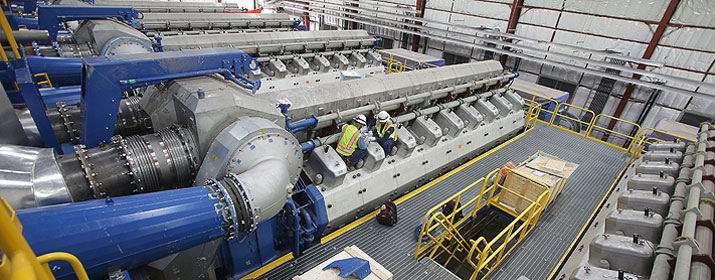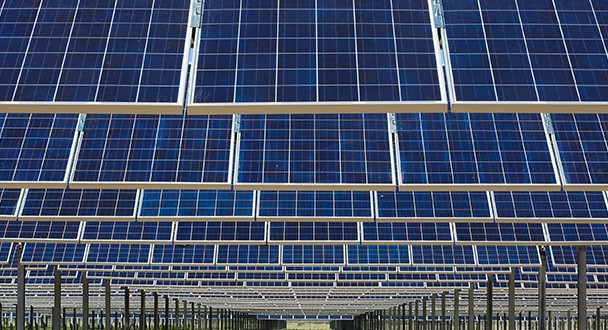
New efficient generators are supporting the expansion of Tucson Electric Power’s wind and solar energy resources, while using less water and reducing overall emissions at Tucson’s largest local power plant.
The project, which consists of 10 reciprocating internal combustion engine (RICE) generators at the H. Wilson Sundt Generating Station, provide TEP with a new type of generating resource to support safe, reliable and affordable service for customers.
The RICE units are essentially large natural gas-fueled versions of the internal combustion engines that power most automobiles. However, while most vehicle engines generate less than 300 horsepower, these units operate at 26,000 horsepower, producing about 18 megawatts (MW) apiece.
The new units replaced two older units at Sundt, improving the plant’s performance while reducing operating costs, water usage and emissions.
The generators are not only 40 percent more efficient than the units they replaced, but also reduce nitrogen oxide emissions by 60 percent, contributing to cleaner air, while reducing the use of water at the Sundt Generating Station by 70 percent – a savings of more than 455 million gallons annually.
“It was really exciting to build something that will have such a positive impact on our community over time, and that will accommodate renewable energy, which will continue to play such an important role in our portfolio moving forward,” said Conrad Spencer, Director of Tucson Power Production.
Unlike conventional power plants, RICE units run can readily make abrupt and frequent adjustments to power output levels. That helps them compensate for the intermittent output of wind and solar resources, which are playing an increasingly prominent role in TEP’s energy portfolio.
TEP will more than double its wind and solar capacity over the next two years with three new systems that are expected to be completed by 2021:
- A 100-MW solar array paired with a 30 MW battery storage system in Tucson.
- A 99-MW wind system in western New Mexico.
- A 247-MW wind systemin southeastern New Mexico.
Since weather conditions and the time of day have a significant impact on solar and wind generation, RICE units can adjust quickly, ramping up or down as production from renewables drops or surges. That’s important because energy generation and demand must be in precise balance at all times.
More information about these and other improvements are available at tep.com/projects.






